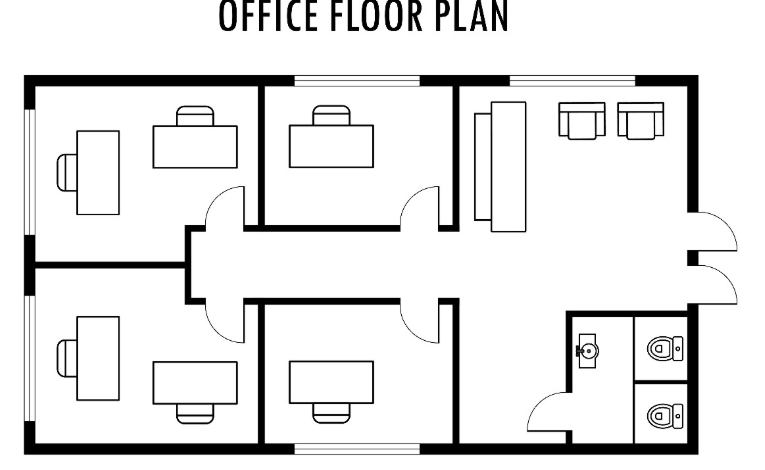How to Design an Office Floor Plan That Boosts Productivity

Making an office where people can focus and work together well begins with a smart office floor plan. A layout that’s been carefully thought through can cut down on distractions, make it easier for everyone to talk to each other. In the end, this will help everyone do better at their jobs.
Prioritize Flow and Accessibility
First, take a look at how people navigate through the space. A well-designed office layout should prevent foot traffic from disrupting concentration or creating frustrating bottlenecks. It’s important that employees can easily get from meeting spots, break rooms, and restrooms without having to squeeze between clusters of desks. Clear and thoughtfully marked pathways help keep things safe and easy for everyone to navigate.
Positioning related departments in physical proximity can also speed up internal communication. If, for instance, your marketing and sales people work closely together, sitting them side by side eliminates lag time and promotes quick coordination. These layout choices go a long way toward keeping everyone linked up and productive.
Incorporate a Balance of Open and Private Spaces
Too much openness can be as harmful as too many walls. Open spaces encourage teamwork, but with noise and distraction that follows. Finding an equal split of office floor planning is finding a way to offer both common and quiet spaces where employees can focus. Open seating for group work with soundproof booths or small offices for solo work is a good model.
Flexible spaces are especially useful in hybrid workspaces. Adjustable furniture and movable partitions enable you to reconfigure the space as per changing team sizes or project demands. Adaptability keeps your space in line with productivity demands as they fluctuate.
Use Natural Light and Smart Zoning
Lighting has a deep effect on mood and work productivity. Position desks near windows to reap maximum benefit from daylight, which can reduce eye strain and boost energy. Wherever possible, avoid placing desks in dark alleys or under harsh artificial light. Good lighting turns an office into a source of mental clarity and concentration.
Another vital design feature is zoning. Create clear-cut zones for different types of work—such as collaboration, concentration, and relaxation. A lounge area helps the staff unwind, while a dedicated brainstorming room helps them think creatively. Each zone should be defined and easily incorporated into the overall office traffic.
See also: How to Secure and Protect Your Business Domain Online
Choose Furniture That Supports Movement and Comfort
The proper furniture will either make or break the functionality of your office. Go for desks, chairs, and storage that promote proper posture and movement. Sit-stand desks, ergonomic chairs, and rolling storage units keep workers comfortable all day. The little things can go a long way toward boosting morale and productivity.
Also, give some thought to where you put your furniture based on how the room is laid out. Try to keep desks out of walking paths and away from windows, and set up meeting tables so that conversations won’t distract others nearby. By making careful choices like these, you can create a space that’s good for focusing on your tasks but also great for jumping into spontaneous team chats.




